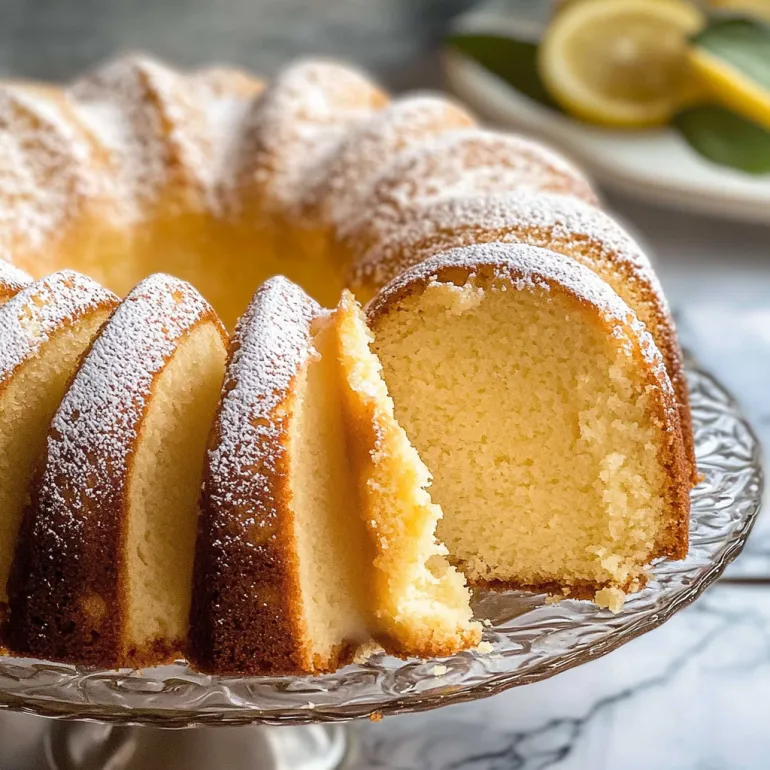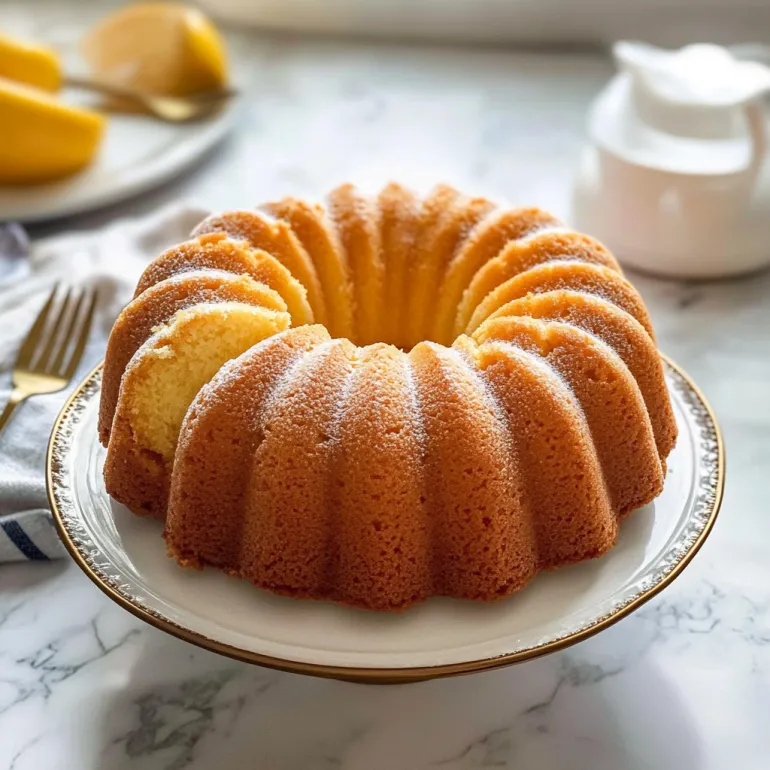 Pin
Pin
This buttermilk pound cake comes out exceptionally dense and buttery with a moist crumb and just the right hint of tang from the buttermilk. It is perfect for sharing at brunch or serving up for dessert with fresh fruit or a simple dusting of powdered sugar.
The very first time I baked this cake, my kitchen filled instantly with the comforting smell of warm vanilla. My family loved it so much that now it is our go to cake for birthdays and special breakfasts.
Ingredients
- All-purpose flour: gives the cake structure and a classic pound cake bite Use good quality unbleached flour for the best texture
- Baking soda: helps the cake rise just enough to stay soft and tall Always check your baking soda for freshness
- Salt: balances the overall flavor and really brings out the sweetness
- Unsalted butter: brings rich flavor and keeps the cake moist Make sure it is very soft before beating
- Granulated sugar: gives the essential sweetness while helping with the classic pound cake crumb
- Large eggs: provide structure and create a lovely golden color in every slice Use the freshest eggs possible
- Vanilla extract: adds a deep fragrance and warm sweetness Look for pure extract not imitation
- Almond extract: lends a subtle bakery nuance that makes this cake extra special but you can skip it if needed
- Buttermilk: is the magic touch giving tang lifting the crumb and keeping it tender Choose real cultured buttermilk for authentic flavor
- Powdered sugar: is perfect for dusting on top Choose a fine powder for a pretty finish
Step-by-Step Instructions
- Prepare the Pan:
- Generously grease a standard ten inch bundt pan with nonstick spray or soft butter then sprinkle a bit of flour and tap out the excess Be sure to cover every nook so your cake releases cleanly
- Mix the Dry Ingredients:
- In a medium bowl whisk together the flour baking soda and salt Make sure the mixture looks even with no streaks
- Cream the Butter and Sugar:
- In the bowl of a stand mixer or using a hand mixer beat the softened butter with the granulated sugar for a full three to five minutes Beat until light in color and fluffy in texture This step traps air for a tender crumb
- Incorporate the Eggs and Flavors:
- Add eggs one at a time letting each fully mix before adding the next Beat in the vanilla extract and almond extract if using This helps evenly disperse the flavors
- Combine with the Dry Ingredients and Buttermilk:
- On low speed add the flour mixture in three parts alternating with the buttermilk Start and end with the flour Gently mix only until just combined so the batter stays tender
- Transfer to the Pan:
- Scrape the batter into your prepared pan Smooth the top with a spatula making sure the batter is evenly spread
- Bake the Cake:
- Place the pan on the middle oven rack and bake at three hundred twenty five degrees for fifty five to sixty five minutes Check doneness by inserting a toothpick—look for moist crumbs not wet batter If the top is browning too fast halfway in loosely tent it with foil
- Cool and Serve:
- Let the cake cool completely right in the pan for at least one hour This allows it to set Gently run a butter knife around the edges flip the pan and turn the cake onto a platter Dust with powdered sugar before slicing if you wish
 Pin
Pin
My favorite part of this recipe is the unmistakable aroma when the almond and vanilla extracts blend in the batter It brings back memories of baking with my grandmother who always insisted on using real buttermilk Her secret was to let the cake rest overnight for the best flavor and texture
Storage Tips
Store your buttermilk pound cake tightly wrapped or inside an airtight container at room temperature for up to five days The flavor deepens after a day or two making leftovers even more delicious If you need to keep it longer wrap slices in plastic and layer with foil before freezing The cake can last up to three months in the freezer Thaw wrapped slices at room temperature to prevent dryness
Ingredient Substitutions
If you run out of buttermilk you can make a simple substitute by adding one tablespoon of lemon juice or white vinegar to a scant cup of milk Let it sit for five minutes before using For a nut free version omit the almond extract altogether and lean on just vanilla Both flavors are classic and comforting
Serving Suggestions
This cake is versatile Try it slightly warm with a scoop of vanilla ice cream or a spoonful of lemon curd It pairs beautifully with fresh berries during spring or summer and it is also delicious with macerated peaches or even a drizzle of honey For brunch serve thin slices alongside coffee or tea
 Pin
Pin
Cultural and Historical Context
Pound cakes have a place in nearly every southern kitchen the original recipe used a pound each of butter sugar eggs and flour Buttermilk adds a distinctive southern touch giving just enough acid to create that signature fine crumb This recipe honors tradition while making room for modern touches like almond extract and gentle mixing for extra tenderness
Frequently Asked Questions About the Recipe
- → Can I substitute regular milk for buttermilk?
Using buttermilk is important for flavor and texture, but you can mix milk with lemon juice or vinegar as an alternative.
- → How do I prevent the cake from sticking to the pan?
Grease the bundt pan thoroughly with baking spray or a generous layer of butter and flour before adding batter.
- → What is the best way to store leftovers?
Keep the cooled cake in an airtight container at room temperature for up to a week, or freeze slices for longer storage.
- → Can I add fruit or nuts?
You can fold in berries or chopped nuts for a twist, but keep amounts modest to maintain the cake's texture.
- → Why is my pound cake dense?
Pound cake is meant to be dense, but avoid over-mixing the batter and measure ingredients carefully for the ideal crumb.
- → Should I let the cake cool before serving?
Letting the cake cool completely helps it set, making it easier to remove from the pan and slice cleanly.
